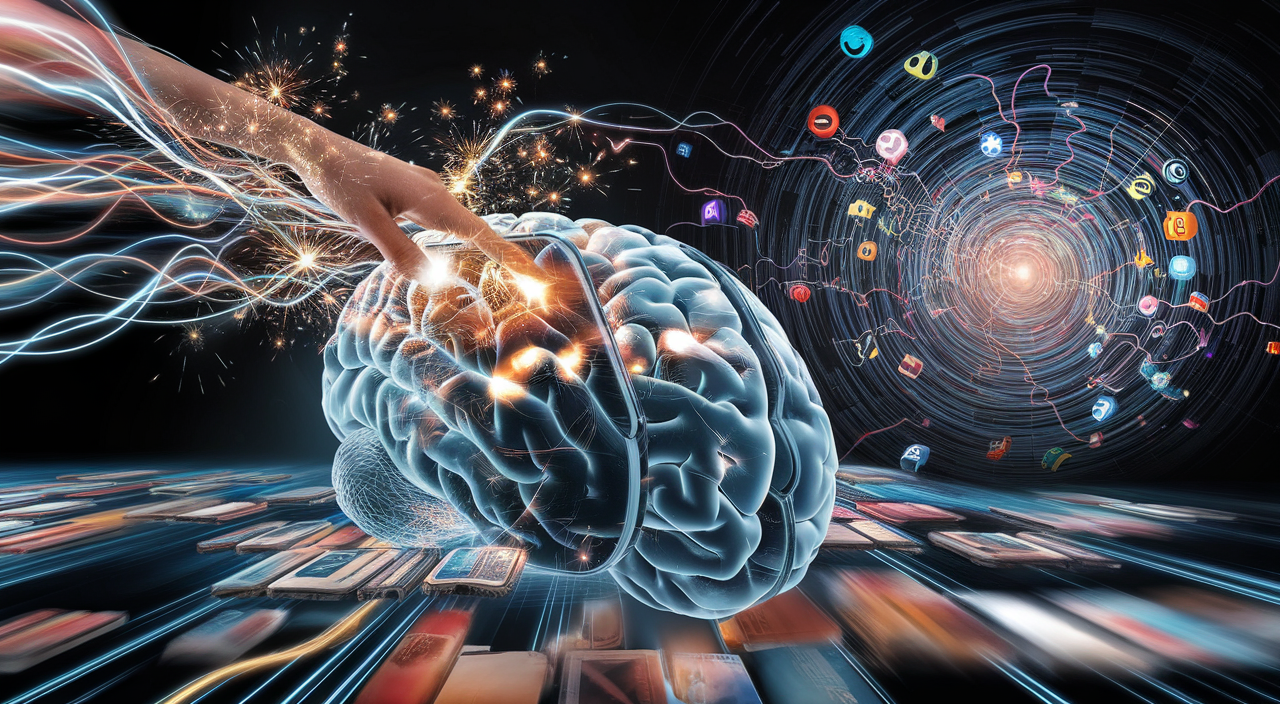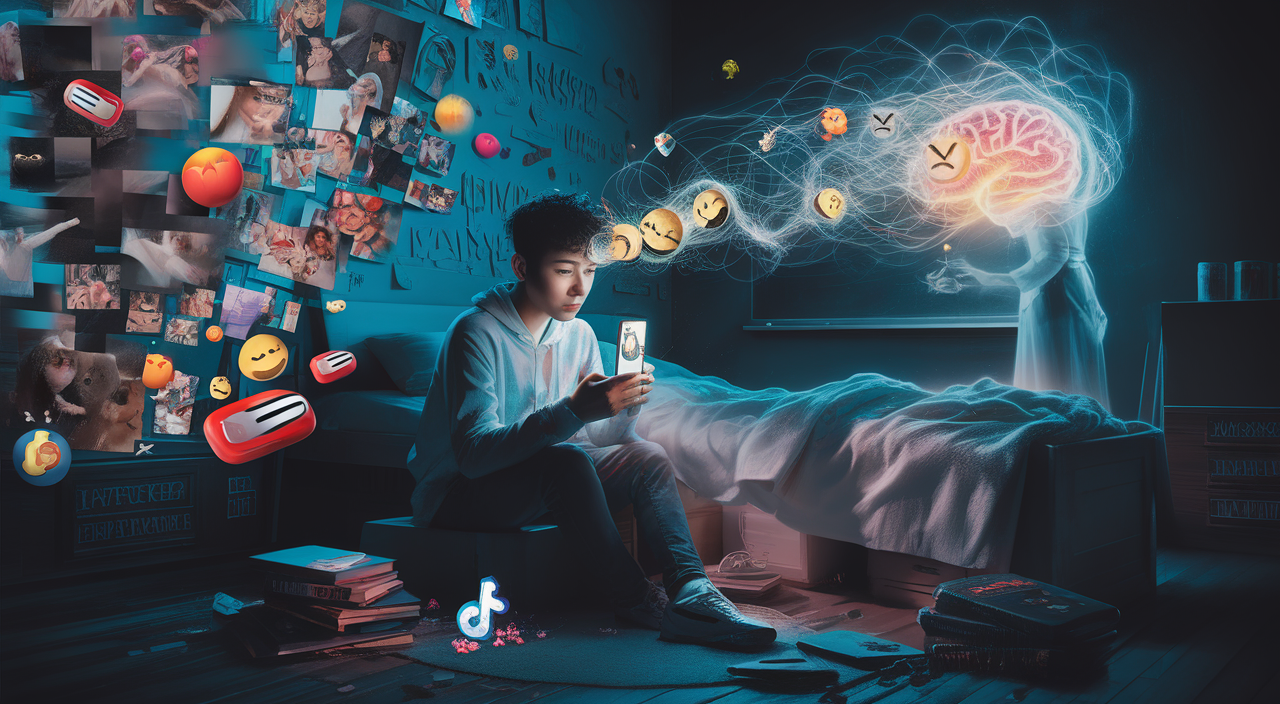TikTok’s advanced dopamine system has hooked over 1 billion monthly active users who spend more than 90 minutes daily consuming quick content, changing how I process information. This addictive platform uses its personalized “For You Page” and endless scrolling to keep users stuck in a continuous stream of perfectly matched videos.
Key Takeaways
- The TikTok Attention Crash hits Gen Z especially hard, with 60% of US teenagers using the platform weekly as their main source for entertainment and news.
- Short-form video consumption works like a digital slot machine, triggering dopamine releases that create addiction patterns similar to gambling, building tolerance over time.
- The steady flow of quick-hit content actually reshapes neural pathways, making focus during longer tasks harder and reducing enjoyment in activities that need sustained attention.
- Teen brains with developing prefrontal cortices face greater risks, with our collective attention span dropping from 12 seconds to just 8.25 seconds since 2000.
- Heavy social media users suffer clear negative effects: 40% report increased anxiety and depression, 67% experience poor sleep quality, and about half show decreased reading comprehension and critical thinking skills.
The Brain-Altering Impact of Short-Form Video Addiction
Understanding the TikTok Attention Crash Phenomenon
The TikTok Attention Crash has become a defining challenge of our digital age, with users spending an average of 90+ minutes daily consuming rapid-fire content. This addictive platform has captured over 1 billion monthly active users globally, fundamentally reshaping how we process information and entertainment.
The platform’s highly personalized “For You Page” operates as a sophisticated dopamine delivery system, serving up an endless stream of content perfectly matched to individual interests. I’ve noticed how this algorithmic perfection, combined with the infinite scroll feature, creates a powerful hook that keeps users glued to their screens, much like how AI companions can create addictive relationships.
The Rising TikTok Attention Crash Impact on Gen Z
The impact of this attention-fragmenting phenomenon is particularly pronounced among younger users. Here’s what the current data reveals about Gen Z’s TikTok usage:
- 60% of US teenagers actively engage with TikTok on a weekly basis
- The platform has become their primary source for both entertainment and news
- Short-form video consumption has replaced traditional media consumption patterns
- Attention spans are increasingly calibrated to 15-60 second bursts
This shift mirrors other digital behavior changes I’ve observed, similar to how people are turning to AI for emotional support. The TikTok Attention Crash doesn’t just affect entertainment consumption – it’s reshaping how an entire generation processes information and maintains focus.
The platform’s addictive nature has created a parallel with other digital dependencies, such as the growing obsession with AI voices. Users find themselves caught in a cycle of quick-hit content that makes it harder to engage with longer-form media or maintain sustained attention.
The psychological impact resembles what I’ve seen with AI relationship simulators, where users become accustomed to instant gratification and struggle with delayed rewards. This rewiring of attention patterns through short-form video addiction presents a unique challenge for both individual users and society at large.
Your Brain on TikTok: The Dopamine Trap
Understanding the TikTok Attention Crash Effect
The science behind TikTok’s addictive nature mirrors the same mechanisms found in gambling addiction. Each swipe triggers a powerful dopamine hit in your brain, creating what experts call the TikTok Attention Crash phenomenon. According to Dr. Anna Lembke, author of “Dopamine Nation,” this constant stream of quick-hit content acts like a digital slot machine, keeping you hooked through unpredictable rewards.
Just like artificial intelligence can create addictive patterns, TikTok’s algorithm masterfully manipulates your brain’s reward system. The more you scroll, the more your brain demands that dopamine rush, leading to a tolerance build-up that makes it harder to find satisfaction in slower-paced activities.
How TikTok Attention Crash Rewires Your Brain
The rapid-fire content delivery on TikTok actually changes your neural pathways. Similar to how voice AI can alter behavior patterns, excessive TikTok use reshapes how your brain processes information. This restructuring makes it increasingly difficult to:
- Maintain focus during longer tasks
- Find enjoyment in reading books or articles
- Engage in deep, meaningful conversations
- Complete work that requires sustained attention
The pull of short-form content can be as powerful as simulated relationships, creating a false sense of connection and satisfaction. Dr. Lembke’s research shows that this digital overstimulation can lead to what she terms “dopamine deficiency,” where regular activities feel bland and unengaging.
Just as AI-generated content can affect mental health, the TikTok Attention Crash impacts your brain’s natural reward system. Each video serves as a tiny dopamine hit, training your brain to crave more frequent, intense stimulation. This constant chase for digital satisfaction can leave you feeling scattered, unfocused, and struggling to find pleasure in slower-paced activities that typically bring long-term fulfillment.
Why Teens Are Most at Risk of TikTok Attention Crash
The Perfect Storm: Teen Brains and TikTok Attention Crash
The teen brain’s developing prefrontal cortex makes it especially vulnerable to the addictive nature of short-form content. I’ve seen how this TikTok attention crash phenomenon hits particularly hard during these crucial developmental years. Since 2000, our collective attention span has dropped from 12 seconds to just 8.25 seconds – that’s less than a goldfish’s attention span.
The constant dopamine hits from rapid-fire TikTok content create what scientists call “popcorn brain,” where teens struggle to focus on slower-paced activities. This matches what I’m hearing from educators who can’t keep students engaged with traditional learning methods, similar to the challenges faced by those dealing with AI companion addiction.
Real Impact on Teen Development
The TikTok attention crash isn’t just about difficulty focusing – it’s reshaping how teens process information. Here’s what research shows about heavy social media users:
- 40% report increased anxiety and depression
- 67% experience poor sleep quality
- 52% show decreased reading comprehension
- 48% demonstrate reduced critical thinking abilities
These effects mirror patterns seen in other digital obsessions, like the rising AI voice technology addiction. Teens are particularly susceptible to social comparison and FOMO, which intensify during adolescence. Just as some turn to AI relationship simulators for comfort, others scroll endlessly through TikTok seeking validation.
The educational impact is significant. Teachers report students struggling with longer assignments and showing resistance to reading passages longer than a typical social media post. This digital rewiring of attention spans can lead to concerning behaviors similar to those seen in AI-enabled behavioral changes.
The TikTok attention crash creates a cycle where teens find it increasingly difficult to engage with traditional learning methods, pushing them further into short-form content consumption. Their developing brains become wired for instant gratification, making it harder to build the sustained focus needed for academic and professional success.
Some experts believe that the rise in short-form video consumption is contributing to reduced focus and impulsivity, as explored in this deep dive into digital overstimulation.
Sources:
The Wall Street Journal – “TikTok Brain Explained: Why Some Kids Seem Hooked on Social Video Feeds”
Common Sense Media – “The Common Sense Census: Media Use by Tweens and Teens”
Microsoft – “Attention Spans Research Report”









